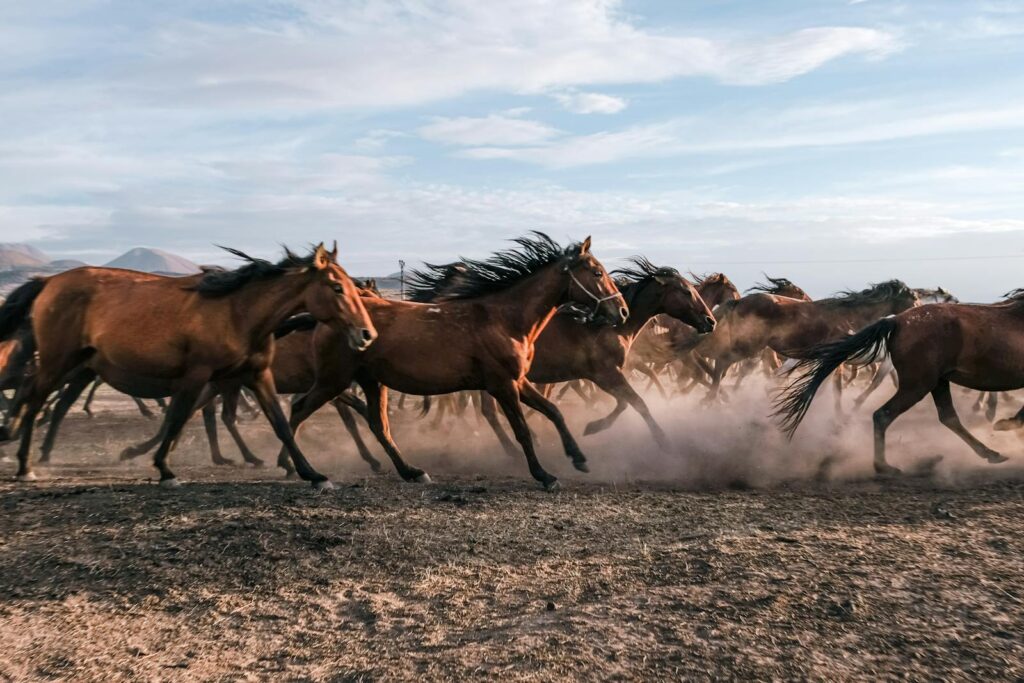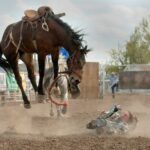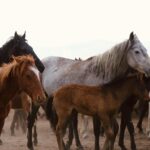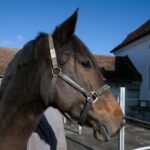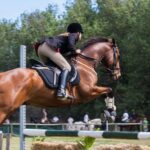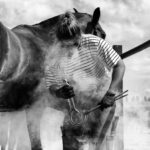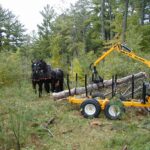Horses, as highly social herd animals, have evolved complex social structures that help ensure their survival and well-being in the wild. At the center of these social dynamics is the concept of herd leadership – a fascinating aspect of equine behavior that combines natural instinct, personality, experience, and even physical attributes. Not all horses are equally suited to lead; some individuals naturally excel at guiding and protecting their herd mates. Understanding why certain horses emerge as effective leaders not only provides insight into equine social psychology but also helps humans better manage domestic herds and develop stronger relationships with these remarkable animals. From the watchful mare guiding her family band across the plains to the confident gelding who naturally takes charge in a pasture of domestic horses, leadership qualities in equines reflect a sophisticated blend of innate traits and learned behaviors that have evolved over millennia.
The Evolutionary Basis of Equine Leadership
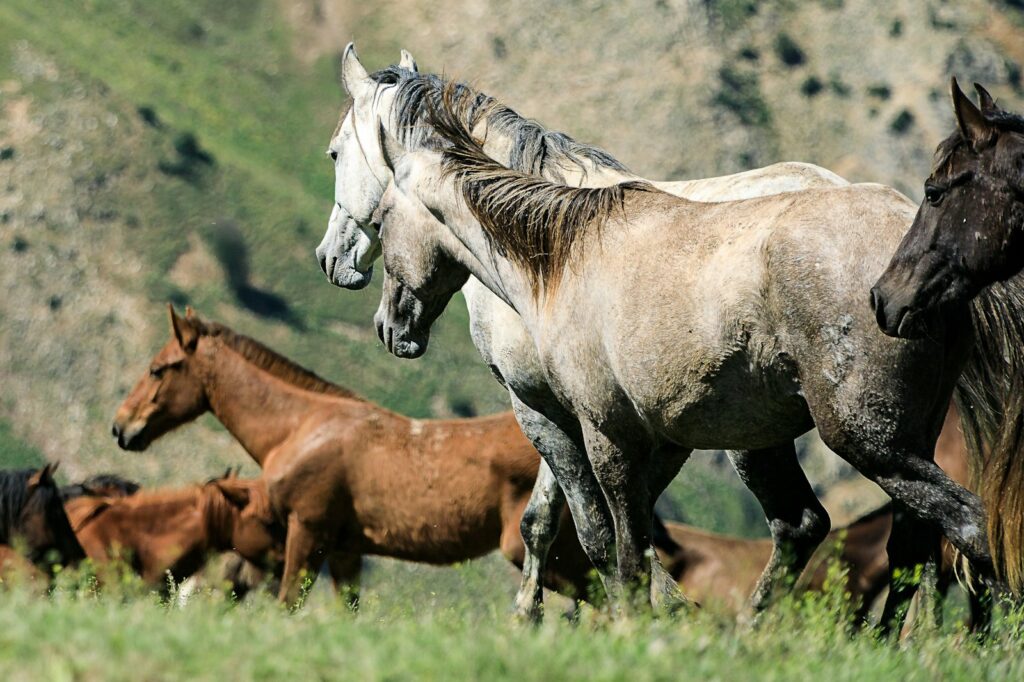
Horses evolved as prey animals on open grasslands, where effective leadership could mean the difference between survival and death for the entire herd. Over millions of years, natural selection favored horses that could make quick decisions about danger, locate resources, and maintain group cohesion. This evolutionary pressure created a species with highly developed senses and the ability to communicate subtle environmental changes to herd mates. The modern horse’s leadership instincts are directly connected to these ancestral survival mechanisms, where leaders needed to balance finding food with avoiding predators. Interestingly, unlike many mammalian species where males typically lead groups, horses evolved a system where experienced mares often provide primary leadership, particularly regarding movement and resource location, while stallions frequently focus on protection and maintaining group boundaries.
The Role of Temperament in Leadership Potential

A horse’s innate temperament plays a crucial role in determining their leadership potential within a herd. Horses with confident but not aggressive dispositions tend to make the most effective leaders, as they inspire trust rather than fear among herd members. These natural leaders typically display curiosity tempered with caution – they’re willing to investigate new situations but remain alert to potential dangers. Research has shown that horses with balanced temperaments – neither excessively fearful nor overly dominant – are more likely to be followed voluntarily by other herd members. Certain bloodlines and breeds may produce individuals with temperaments more conducive to leadership roles, though individual variation exists within all equine populations. The best equine leaders combine self-assurance with social awareness, essentially embodying qualities that signal to other horses that following this individual will enhance their chances of safety and access to resources.
The Mare-Led Hierarchy: Female Leadership in Horse Herds
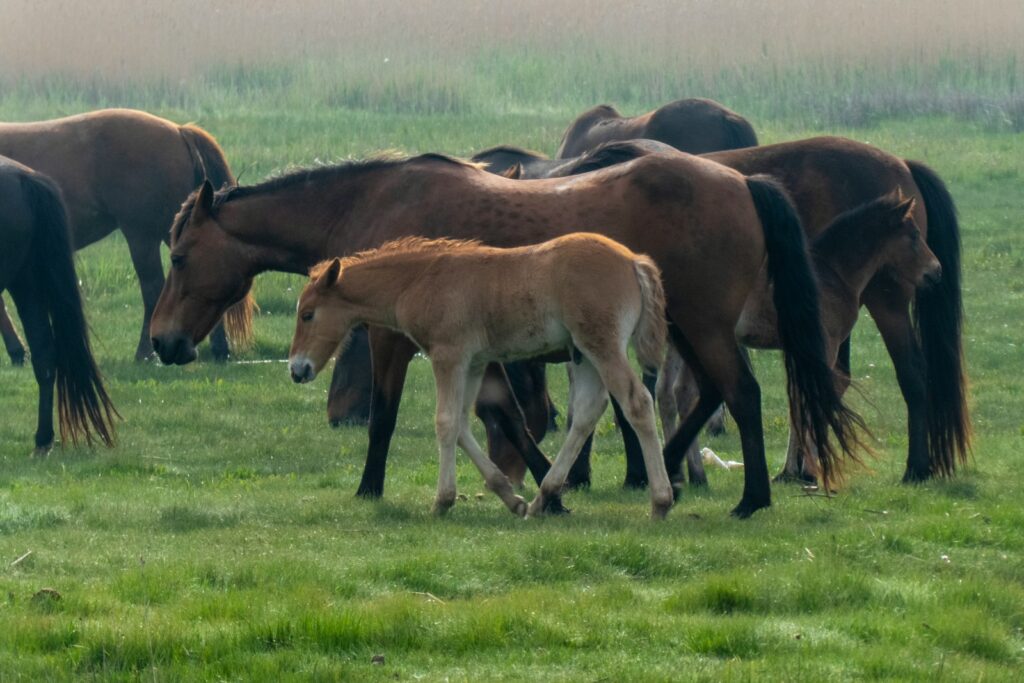
In natural horse herds, it’s often an experienced mare who makes critical decisions about herd movement, grazing locations, and access to water sources. These lead mares, sometimes called “alpha mares,” typically gain their position through a combination of age, experience, consistent behavior, and maternal lineage. Unlike leadership models based primarily on dominance and aggression, the mare-led hierarchy often operates on subtle communication and earned respect. Studies of feral horse bands show that lead mares are frequently followed voluntarily by other horses, without the need for threats or physical confrontation. The influence of these matriarchs can be observed when a herd faces danger – other horses watch the lead mare’s reaction to determine their own response, making her calm assessment of situations crucial to herd safety. This female leadership model differs significantly from many other mammalian social structures and highlights the unique evolutionary path horses have taken.
Physical Attributes That Contribute to Leadership
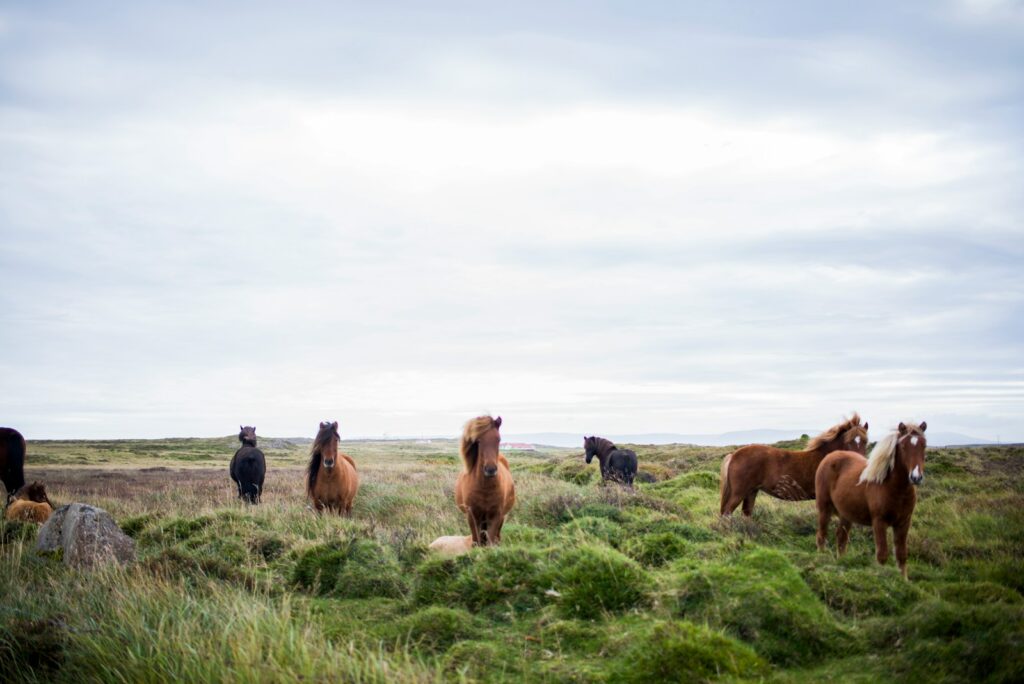
While temperament and behavior are paramount in establishing leadership, certain physical characteristics can enhance a horse’s leadership potential within a herd. Horses with excellent sensory capabilities – particularly keen eyesight and a sensitive sense of smell – often detect threats earlier than their herdmates, naturally positioning them as vigilant leaders. Healthy, athletic individuals with good stamina typically rise in the social hierarchy, as they can maintain consistent energy levels for vigilance and respond quickly to dangers. Size can play a variable role; while larger horses may command respect in some situations, smaller, agile horses sometimes make better tactical decisions in challenging terrain or high-pressure situations. Research has also noted that horses with distinctive coloration or markings sometimes garner more attention from herdmates, potentially facilitating leadership through increased visibility, though this effect varies widely across different herd environments.
Experience and Age as Leadership Factors
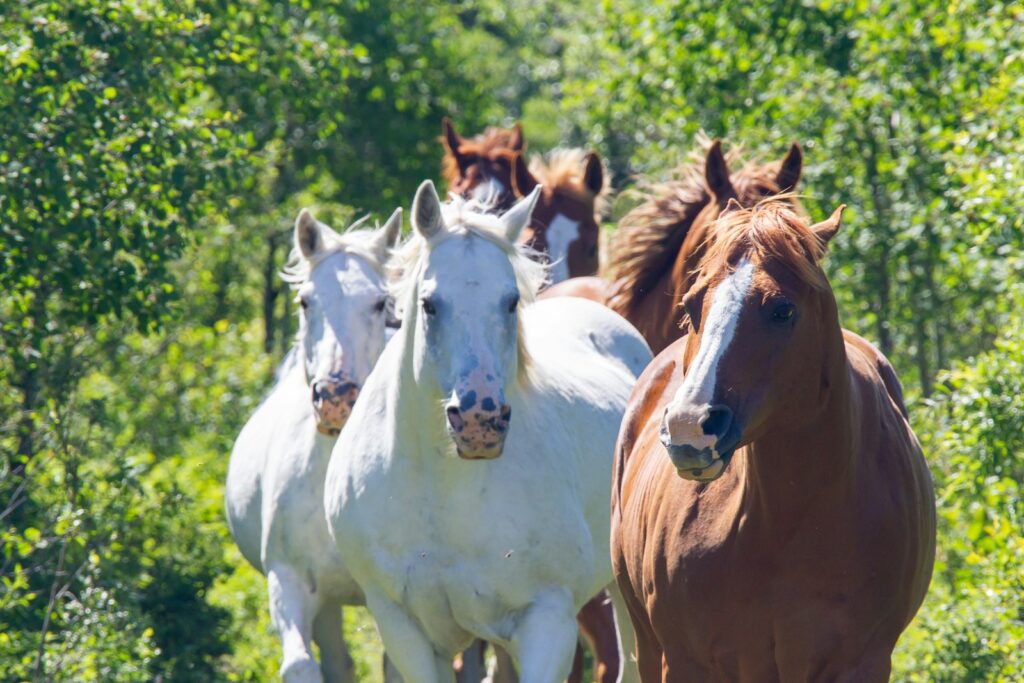
Experience stands as one of the most significant factors in determining which horses become effective herd leaders. Older horses that have successfully navigated numerous challenges – from predator encounters to finding water during droughts – accumulate valuable knowledge that benefits the entire herd. This wisdom manifests in confident decision-making during crises and an ability to anticipate problems before they become serious threats. Studies of feral horse bands consistently show that mature mares between 10 and 20 years old often occupy leadership positions, having reached their physical and cognitive prime. These experienced leaders demonstrate exceptional spatial memory, remembering migration routes and resource locations across vast territories, sometimes recalling paths not used for years. However, age alone doesn’t guarantee leadership status; an older horse must maintain both physical competence and social connections to effectively lead the herd.
Social Intelligence and Communication Skills
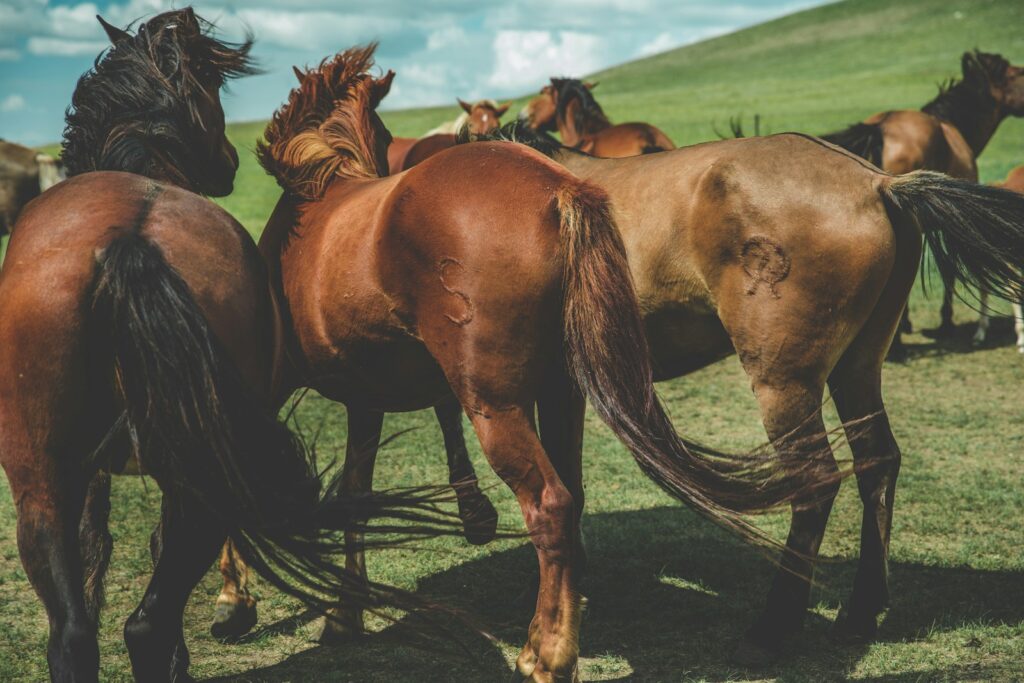
Horses that excel at leadership typically possess superior social intelligence and communication abilities compared to their herdmates. These individuals read subtle body language with remarkable accuracy, responding appropriately to the emotional states and needs of others in the herd. Effective equine leaders communicate clearly and consistently, using a sophisticated repertoire of ear positions, facial expressions, body postures, and vocalizations to convey intentions and maintain order. Research has shown that horses with high social intelligence form stronger bonds throughout the herd, creating networks of trust that reinforce their leadership position without constant enforcement. These socially adept horses mediate conflicts between herd members, intervening when tensions rise and preventing minor disagreements from escalating into dangerous confrontations. The best leaders maintain awareness of each individual’s position and status within the herd, effectively managing the complex social dynamics that keep the group functioning cohesively.
Consistency and Trustworthiness in Leaders
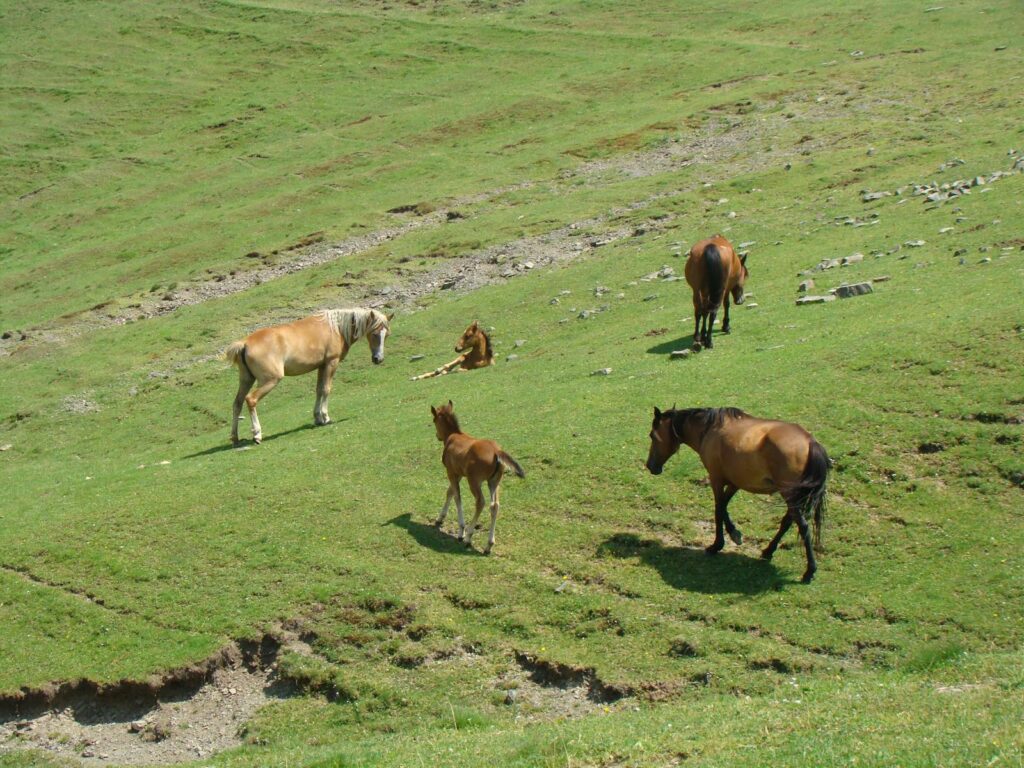
Horses that establish themselves as dependable, predictable individuals tend to gather more followers within the herd structure. Consistency in behavior creates trust among herdmates, who learn they can rely on certain individuals to make sound decisions during both routine activities and emergencies. Effective herd leaders maintain a steady emotional state, neither panicking in crises nor becoming complacent during periods of safety. This emotional stability provides reassurance to more reactive herd members and prevents unnecessary energy expenditure from false alarms. Studies observing herd dynamics have noted that horses consistently demonstrate preference for following leaders whose previous decisions led to positive outcomes, such as finding fresh grazing or safe resting areas. The development of trust between a leader and followers represents a sophisticated cognitive process that strengthens over time through repeated positive experiences and reliable behavior patterns.
Decision-Making Abilities in Equine Leaders
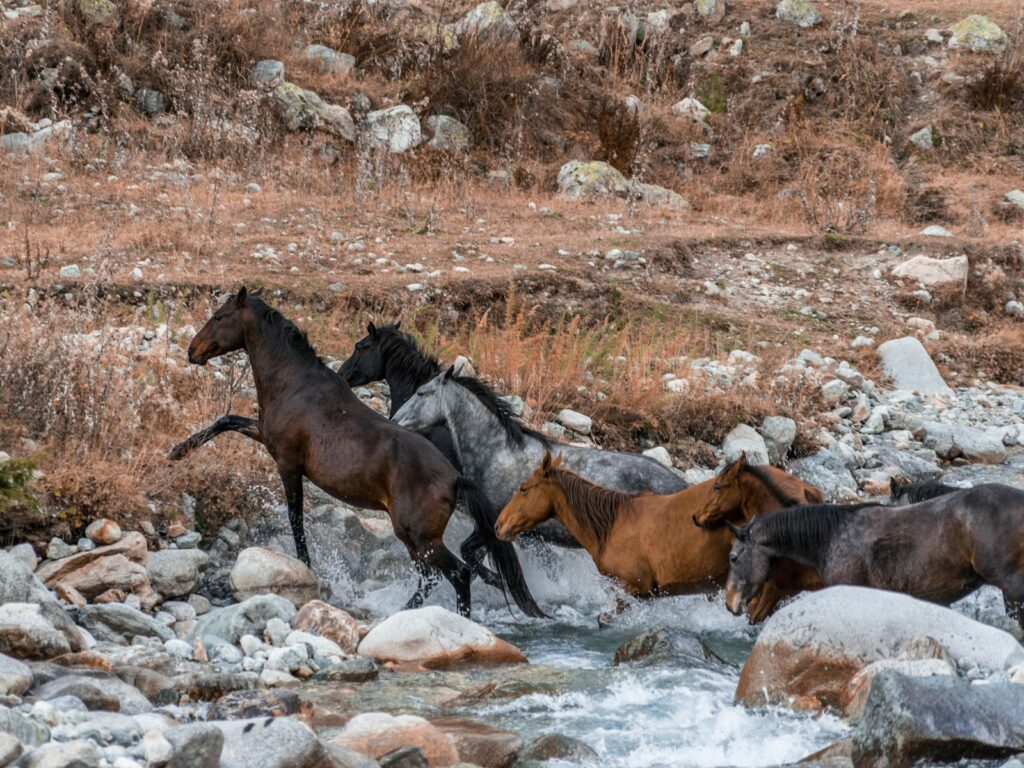
Superior decision-making capabilities distinguish exceptional herd leaders from merely dominant horses within the social hierarchy. Leading horses demonstrate remarkable ability to balance competing priorities – weighing the need for food against safety concerns, determining optimal travel routes, and deciding when to rest or move on. These decisions involve complex assessment of environmental conditions, the physical state of herd members, and potential threats on the horizon. Research has shown that effective equine leaders often take time to observe situations before acting, gathering information and waiting for the right moment rather than reacting impulsively. This measured approach to decision-making prevents wasted energy and reduces risk to the herd. Perhaps most impressively, leading horses appear to consider the welfare of the entire group rather than pursuing solely self-interested choices, sometimes delaying their own feeding or rest to ensure vulnerable herd members receive necessary resources.
The Balance Between Assertiveness and Aggression
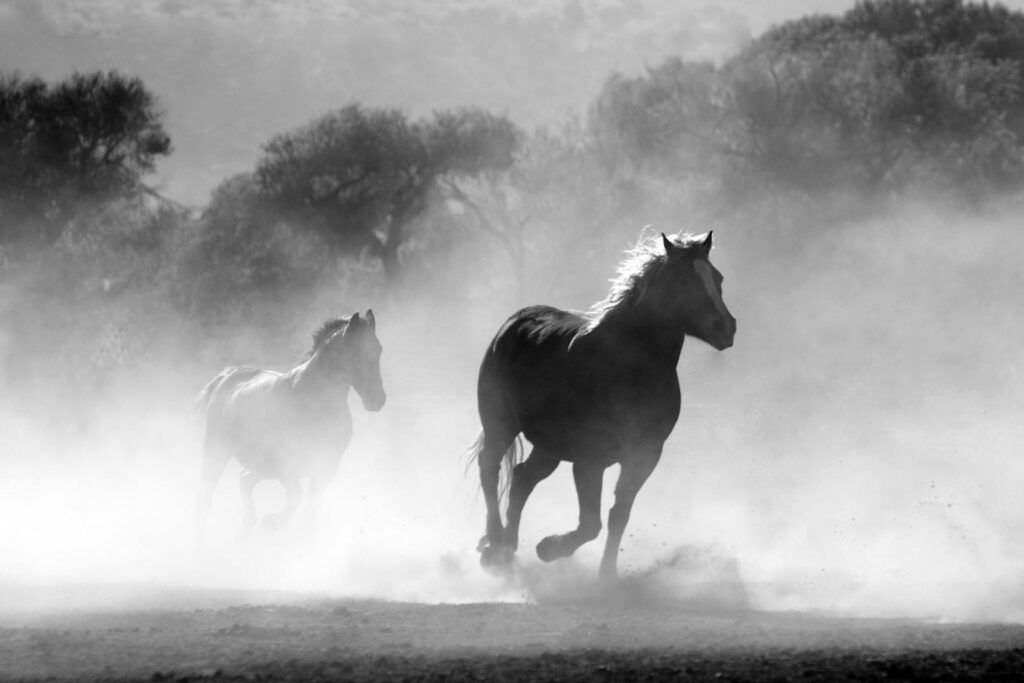
The most effective equine leaders maintain a careful balance between assertiveness and outright aggression, using the minimum force necessary to establish and maintain order. These horses command respect through confident body language, consistent enforcement of boundaries, and strategic timing of interventions rather than through frequent aggressive displays. Studies have shown that excessively aggressive horses may temporarily dominate resources but rarely establish lasting leadership roles, as other horses avoid rather than willingly follow them. The distinction between healthy assertiveness and counterproductive aggression represents a nuanced aspect of equine social dynamics that successful leaders navigate instinctively. Skilled leaders employ a graduated response system – beginning with subtle signals like ear positioning or eye contact before escalating to more obvious warnings only if necessary. This judicious use of communication maintains order while preserving the social bonds that strengthen the herd.
Leadership Dynamics in Domestic Versus Wild Herds
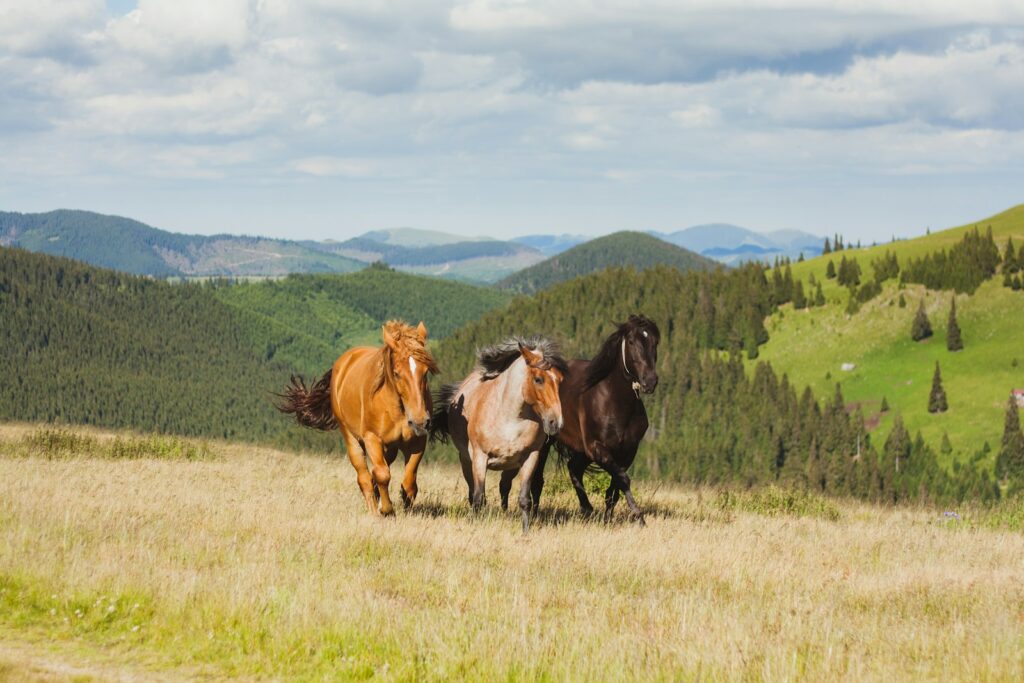
Leadership patterns differ significantly between feral horse populations and managed domestic herds, reflecting the influence of human intervention on natural equine social structures. In wild bands, leadership roles typically develop organically over time, with stable hierarchies maintained through consistent interaction and clear communication between familiar individuals. Domestic herds, by contrast, often experience frequent changes in composition as horses are bought, sold, or relocated, creating more fluid and sometimes unstable leadership dynamics. Human management practices – including selective breeding, feeding arrangements, and limited space – may artificially alter which horses assume leadership positions or prevent natural leadership from fully expressing itself. Research has shown that domestic horses placed in more naturalistic settings often revert to traditional leadership patterns, with experienced mares gradually assuming decision-making roles for movement and resource allocation. Understanding these differences helps caretakers create management systems that work with, rather than against, horses’ innate social tendencies.
The Protective Aspect of Herd Leadership
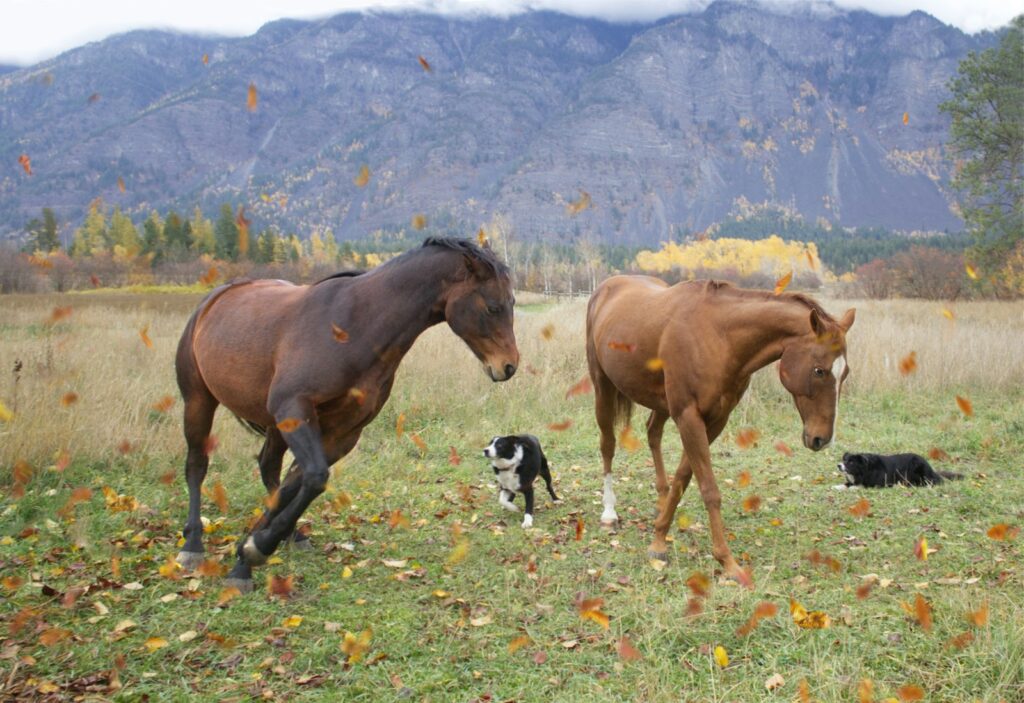
Protection of vulnerable herd members represents a fundamental responsibility of equine leaders, manifesting in various vigilant behaviors that increase collective security. Effective herd leaders position themselves strategically during rest periods, often remaining slightly apart from the main group to maintain better visibility of potential threats. These sentinel individuals typically eat less and interrupt their grazing more frequently to scan the environment, essentially trading some of their own comfort for the safety of the group. Research has documented how lead mares and protecting stallions coordinate their efforts, with mares often determining flight responses while stallions may intercept or confront threats directly. The most sophisticated protective leadership involves teaching younger horses appropriate responses to different types of dangers – distinguishing between serious threats requiring immediate flight and minor disturbances that can be safely monitored. This knowledge transfer from experienced leaders to juvenile herd members represents a form of cultural learning that enhances the entire herd’s survival prospects.
How Leadership Qualities Can Be Cultivated Through Training
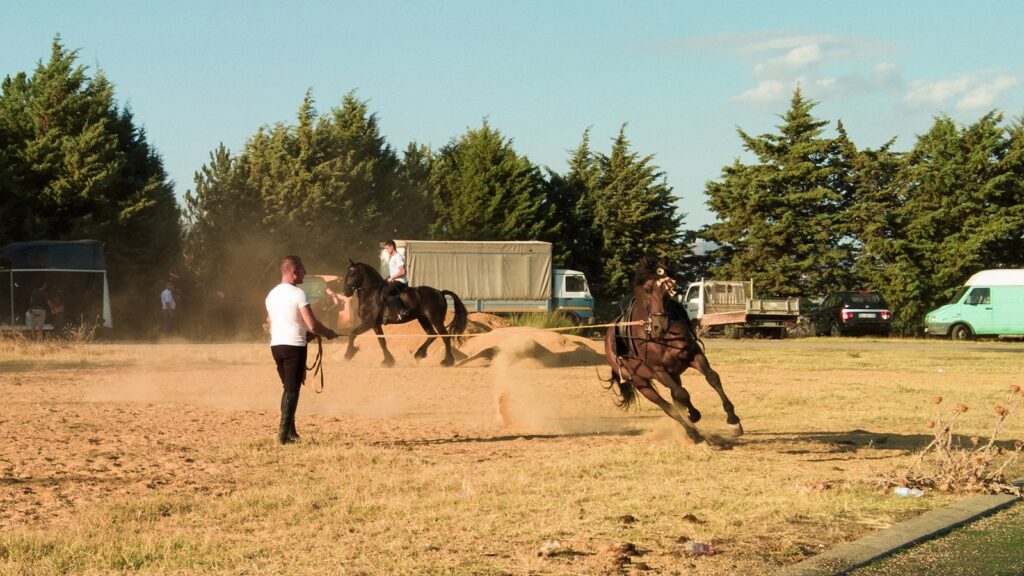
While natural leadership tendencies have strong genetic and temperamental foundations, many leadership qualities can be enhanced or diminished through human interactions and training approaches. Horses raised with appropriate boundaries, consistent expectations, and opportunities for problem-solving often develop more confident, decision-making personalities that translate to stronger leadership potential. Training methods that respect the horse’s need for clear communication while providing guided choice situations can strengthen their ability to make sound decisions independently. Studies examining the impact of different handling styles show that horses raised with overly controlling or punitive methods typically develop either overly submissive or aggressively defensive personalities, neither conducive to healthy leadership. Conversely, training approaches that build confidence through progressive challenges while maintaining emotional safety tend to develop horses with balanced temperaments more suited to leadership roles. This understanding offers valuable insights for breeders and trainers interested in developing horses with strong, positive leadership characteristics.
Recognizing Leadership Potential in Young Horses
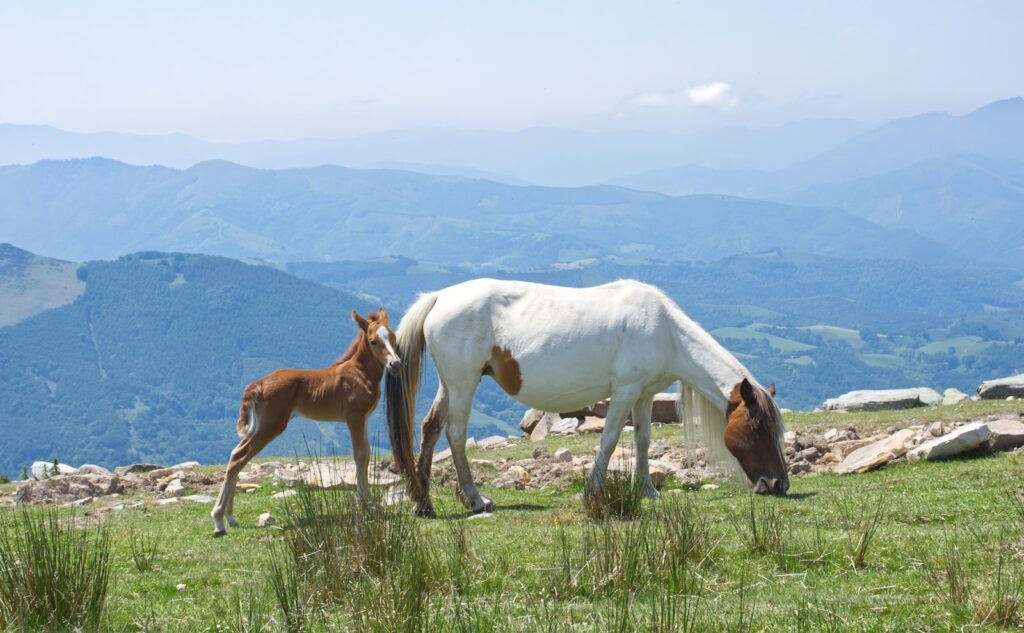
Identifying leadership potential in young horses requires careful observation of subtle behavioral patterns that often manifest well before maturity. Foals and yearlings with leadership tendencies typically display greater environmental awareness, spending more time observing their surroundings rather than focusing exclusively on play or food. These young horses often show early signs of emotional self-regulation, recovering quickly from startling events and adapting to new situations with curiosity rather than excessive fear. Research tracking the development of horse herds has noted that juveniles with leadership potential frequently position themselves near adult leaders, observing and mimicking their behavior in what appears to be active social learning. Young horses with strong leadership inclinations also tend to initiate activities among their peer group, whether movement to new grazing areas or play sessions, showing early comfort with decision-making. Recognizing these early indicators allows breeders and trainers to provide appropriate experiences that nurture rather than suppress these valuable natural tendencies.
Understanding Equine Leadership: Nature and Nurture Combined
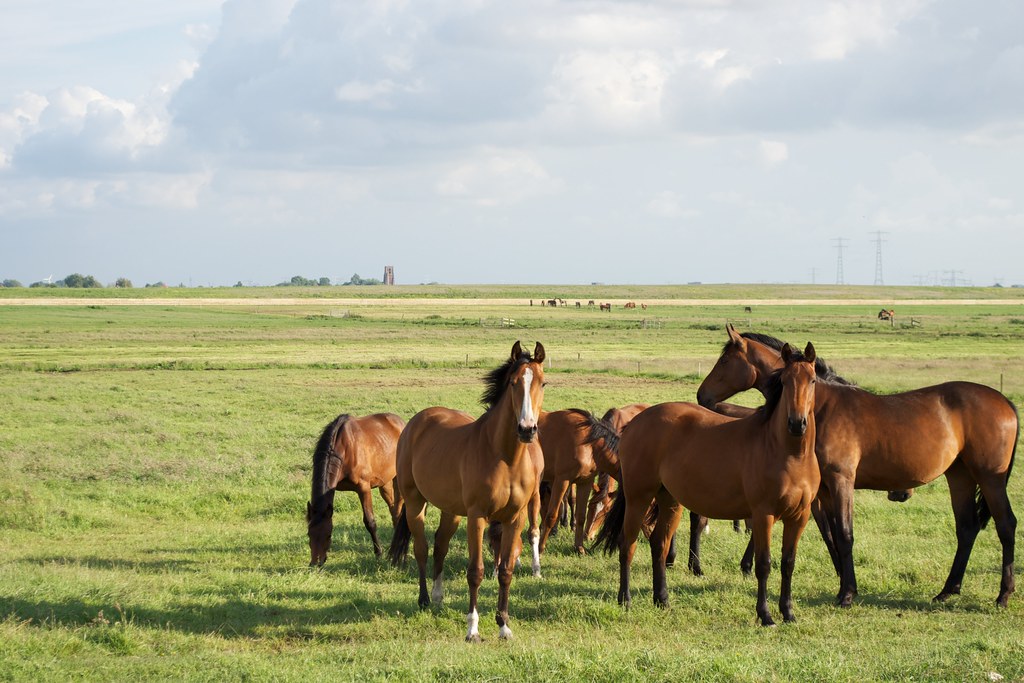
The complex interplay of factors that determine which horses excel at herd leadership reveals the sophisticated social intelligence of these remarkable animals. From evolutionary adaptations that prioritized group survival to individual traits that inspire trust and confidence, equine leadership represents a fascinating study in natural social organization. Whether in wild herds roaming open landscapes or in domestic groups navigating human-managed environments, horses that lead effectively combine innate qualities with learned experience. By understanding these dynamics, humans can better support healthy social structures in their equine charges, recognizing that good leadership serves the entire herd’s wellbeing. Perhaps most importantly, the study of equine leadership reminds us that these animals are not simply passive followers of human direction, but complex social beings with their own rich traditions of guidance, protection, and community.

